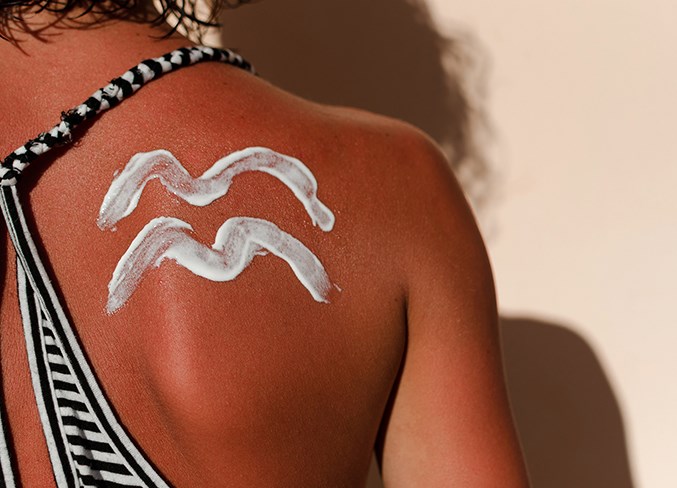Skin cancer is one of the most common cancers in Canada and protecting your skin from the sun is the best way to prevent it, with sunscreen being an important tool to mitigate risk.
Recently, a Banana Boat sunscreen product was recalled for containing benzene, which itself is a known cancer-causing chemical. But experts say that shouldn’t stop you from using sun protection products.
“It’s not even a by-product of one of the active ingredients. It seems that it’s part of the manufacturing process of some of these products.”
In other words, benzene will not be found on the list of ingredients in any sunscreen and it’s not a chemical you need to look out for when buying a product. The ingredients found in sunscreens on your drug store shelves are all approved by Health Canada and safe for daily use.
Types of sunscreen
The ingredients in a sunscreen product depend on whether they fall into one of two categories: organic or mineral.
Organic sunscreens contain chemicals like octocrylene, benzophenone and homosalate. Mineral sunscreens, like the name suggests, contain minerals like zinc oxide and titanium dioxide.
Rosen says both are equally safe and effective.
“There have been studies that have shown that there’s some absorption of the organic chemicals … but even the study that showed that there was some absorption in the skin actually concluded by saying ‘just because we found this doesn’t mean you should stop wearing sunscreen because there’s still no signal that there’s any biological harm,'” she says.
UVA and UVB protection
Rosen says the sun emits both ultraviolet A (UVA) and ultraviolet B (UVB) rays and skin needs to be protected against both.
She says most sunscreens provide effective UVB protection, most notably from sunburn, indicated by the Sun Protection Factor (SPF) number displayed on the product.
A higher number does provide better protection, but there is also another reason to opt for SPF 50 or higher.
“Human beings apply much less sunscreen generally than is used in the official testing to determine the Sun Protection Factor. So an SPF of 50 or 60 is nice because when people put on half as much, they’re getting an SPF 30.”
Along with UVB, you also want protection against UVA which has been linked to skin aging, wrinkles and possibly some types of skin cancer.
To ensure you’re protected from both types of UV rays, Rosen suggests looking for the words “broad spectrum” on the label.
“Lately there’s been the letters ‘UVA’ enclosed in a circle [on packaging]. And that’s important because that means that product has met the European standard for ultraviolet A protection,” she says.
The benefits of sunscreen
Rosen points of two main benefits of sunscreen: prevention of cancer and prevention of photo-aging.
Cancer prevention
The ultraviolet rays from the sun cause DNA damage in the skin which can ultimately lead to the formation of skin cancer.
Rosen says non-melanoma skin cancers that develop in the upper layers of the skin are the most common cancers in Canada.
“For the most part, you cut them out and they’re gone. You have to wait a long time for them to cause any trouble besides a local procedure, but still they can bleed, they can grow, you can wind up with a surgical scar and it’s a painful experience to have the surgery on your face or your nose,” she explains.
Melanoma is the most serious type of skin cancer that develops in the cells that produce melanin, the pigment that provides the colour to your skin. The exact cause is unknown but it does have a relationship to skin exposure.
“The incidence of melanoma is increasing, particularly in older men on their backs. So it’s a good idea to have someone check your back because you can’t see it yourself,” says Rosen.
“Sunscreens reduce the risk of skin cancer, especially when used along with other sun protective measures, like wearing a hat, wearing sunglasses and wearing protective clothing.”
Photo-aging prevention
Photo-aging refers to premature aging of the skin due to repeated or prolonged exposure to the sun’s ultraviolet rays, but may also be caused by the use of tanning beds.
“If you look at somebody who spent a lot of time in the sun, the changes of the skin of their face and the backs of their hands looks very different than the skin of their stomach that’s mostly been protected. Sunscreens are very good at protecting [exposed skin] from photo-aging.”
Rosen says even older adults who may feel it’s too late to use sunscreen after the damage is done can benefit from sun protection.
“They can act as role models for their family and they can prevent further damage,” she says. “There also seems to be some literature that says you can actually get some reversal of sun damage if you start being careful.”
